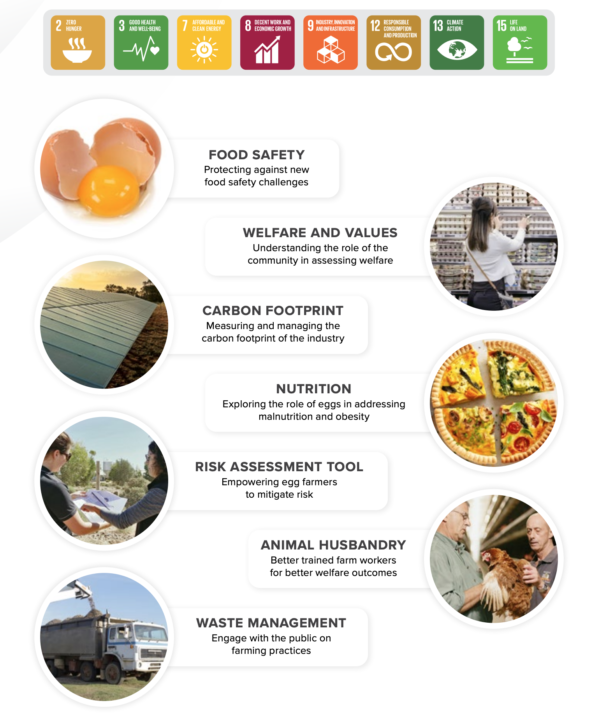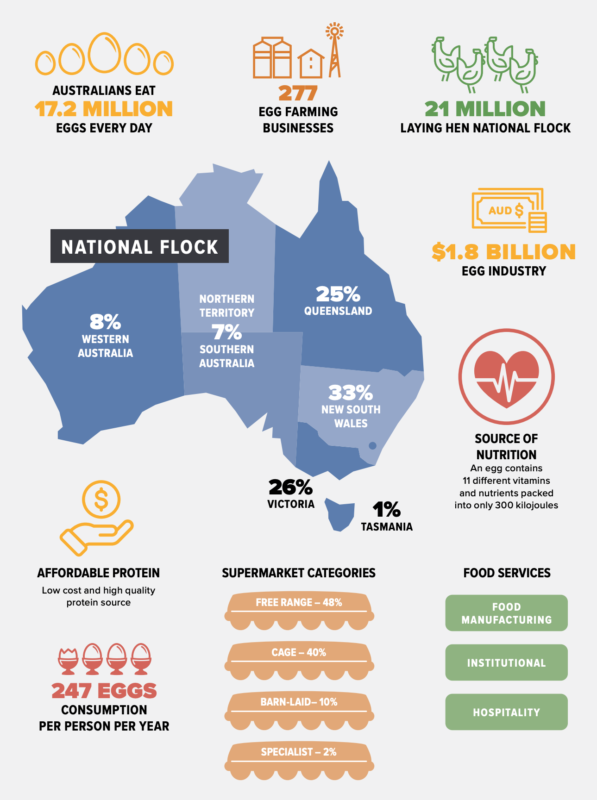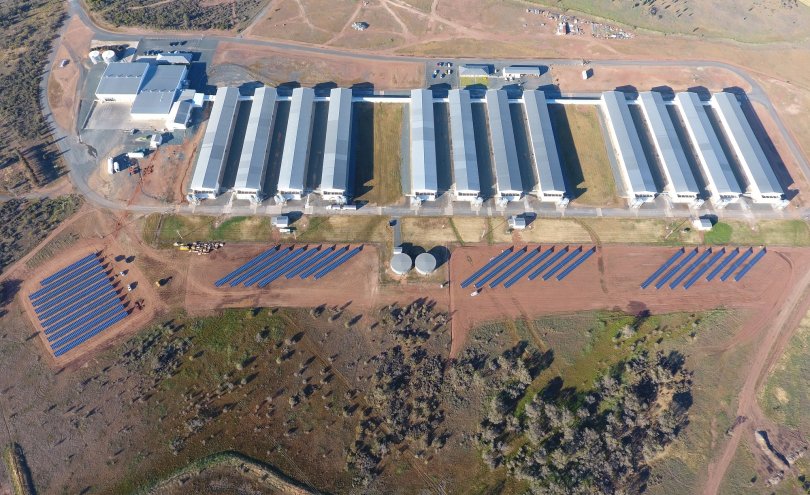We don’t want to over egg it, but the industry-owned research and development corporation, Australian Eggs, on Friday launched a simple, enabling Solar Calculator on its website to help Australia’s small to medium egg-farming businesses understand how they can reduce their costs, increase their sustainability, and keep cool air circulating amongst the feathers of their heroic hens by installing solar on or beside their laying sheds.
“The egg industry uses a lot of electricity,” Rowan McMonnies, Managing Director at Australian Eggs, tells pv magazine, “and the main use of electricity is for a welfare outcome.” That is, hen houses are air-conditioned to maintain temperatures at or below 28 degrees Celsius, during the heat of Australian summers.
For egg farmers with around 10,000 or more laying hens the management of feed, egg collection and manure removal is also automated.
“There’s quite a lot of machinery involved,” says McMonnies, who adds that solar generation perfectly aligns with the industry’s peak day-time electricity needs.
Although Australian Eggs reports that 10 of country’s 12 largest egg producers already have some level of solar energy powering their farms, there’s an opportunity for widespread savings to the industry in potentially upsizing some of those systems, and in helping the time-poor middle tier of mostly family-run businesses assess the viability of solar for their operations.
Power to the poultry farmer
The calculator — developed by Queensland-based process-engineering firm, All Energy Pty Ltd, which consults to businesses on how to reduce their operating costs — gets farmers to enter the number of hens they’re keeping, their output in dozens of eggs, their nearest capital city, the percentage of grid-sourced electricity they’d like to offset with solar, and some salient details from their current electricity bill.
It returns an estimate for both ground-mounted and rooftop solar systems, calculating optimal system size, cost, savings on electricity per annum, and the payback period in years.
Savings are not the only driver for Australian Eggs to encourage solar uptake among its members.
Enhancing consumer relations
Since 2018, the organisation has commissioned the CSIRO breakaway, Voconiq, to conduct annual surveys of the egg-buying public that gauge their perception of the industry and their trust in its practices, and to inform its Egg Industry Sustainability Framework.
McMonnies, who has led the organisation since 2017, says the initial results were positive, “that people value eggs, and they had trust in the production process”. Fascinating fact: per capita egg consumption has increased in Australia, from 221 in FY2015 to 247 in FY2019.
Subsequently, the industry has sought to increase that level of trust through transparency about its operations, and by improving its sustainability. In 2020 its results continued the year-on-year trend of increased trust on the part of consumers, with a second 4% uptick.
“By listening to the community, undertaking action and then demonstrating that action, we’ve created this cycle where people can see we’re trying,” says McMonnies.
“You don’t click your fingers and everything’s perfect overnight,” he adds, but egg producers and the frittata-eating, egg-noodle slurping, bacon-and-egg-roll-consuming public realise that agricultural practices have to change to be able to provide healthy, sustainable nutrition to a growing population, while limiting their use of resources.
“Egg farmers have really embraced that process. They’ve been an important part of staple food production, and want to continue to be that for many, many ears to come,” says McMonnies. In 2050 and beyond, he says, they want to “be part of the solution”.

Image: Australian Eggs
The wonder of the chicken
New South Wales egg producer, Brett Langford, invested in 525 kW ground-mounted solar system to power his free-range and caged sites which together house almost 250,000 chickens, a feed mill and chick-rearing sites.
He told ABC Rural’s Tim Fookes last week that the decision was not only economic: “We as an industry are a very low-carbon-sourced industry and this is another level of where we’re trying to be more efficient and responsible,” he said.
McMonnies confirms that, overall, the egg industry is one of agriculture’s most sustainable and efficient producers, due in large part to what he describes as “The wonder of the chicken,” and its ability to convert feed into protein.
Compared to other meat-producing industries, the industry is also efficient in its use of land; and its waste — chicken manure — is a valuable fertiliser for other agriculture.
In its steady trajectory towards sustainability of egg production, Australian Eggs engages in research to help its members achieve optimal feed-to-laying ratios, and establish methods of safely processing manure for distribution, and it knows the industry’s high level of electricity consumption is best addressed by renewable energy generation.
Case studies on the Australian Eggs website include one of the smaller egg producers in Western Australia that installed a 40 kW roof-mounted system in 2014, which produces 37% of its energy, has had a payback period of 2.3 years and reduces the farm’s carbon emissions by 54 tonnes per annum.
Harder to get right than your average souffle
Australian Eggs estimates there are around 50 small-to-medium (loosely defined as having between 10,000 and 100,000 hens) egg producers in Australia whose operations can benefit from behind-the-meter generation of solar energy.
They don’t have procurement departments. The choice of whether to upgrade infrastructure, says McMonnies usually comes down to one individual who doesn’t have time to do the research into whether the decision is viable, or how much solar makes sense for them.
“It can be very confusing and the solar market isn’t static,” he adds, so a perceived lack of objective and accurate information becomes an impediment to action.
The Australian Eggs Solar Calculator takes industry needs into account; its estimates get the egg rolling on investments that make sense for individual businesses.

Image: Australian Eggs
This content is protected by copyright and may not be reused. If you want to cooperate with us and would like to reuse some of our content, please contact: editors@pv-magazine.com.









By submitting this form you agree to pv magazine using your data for the purposes of publishing your comment.
Your personal data will only be disclosed or otherwise transmitted to third parties for the purposes of spam filtering or if this is necessary for technical maintenance of the website. Any other transfer to third parties will not take place unless this is justified on the basis of applicable data protection regulations or if pv magazine is legally obliged to do so.
You may revoke this consent at any time with effect for the future, in which case your personal data will be deleted immediately. Otherwise, your data will be deleted if pv magazine has processed your request or the purpose of data storage is fulfilled.
Further information on data privacy can be found in our Data Protection Policy.